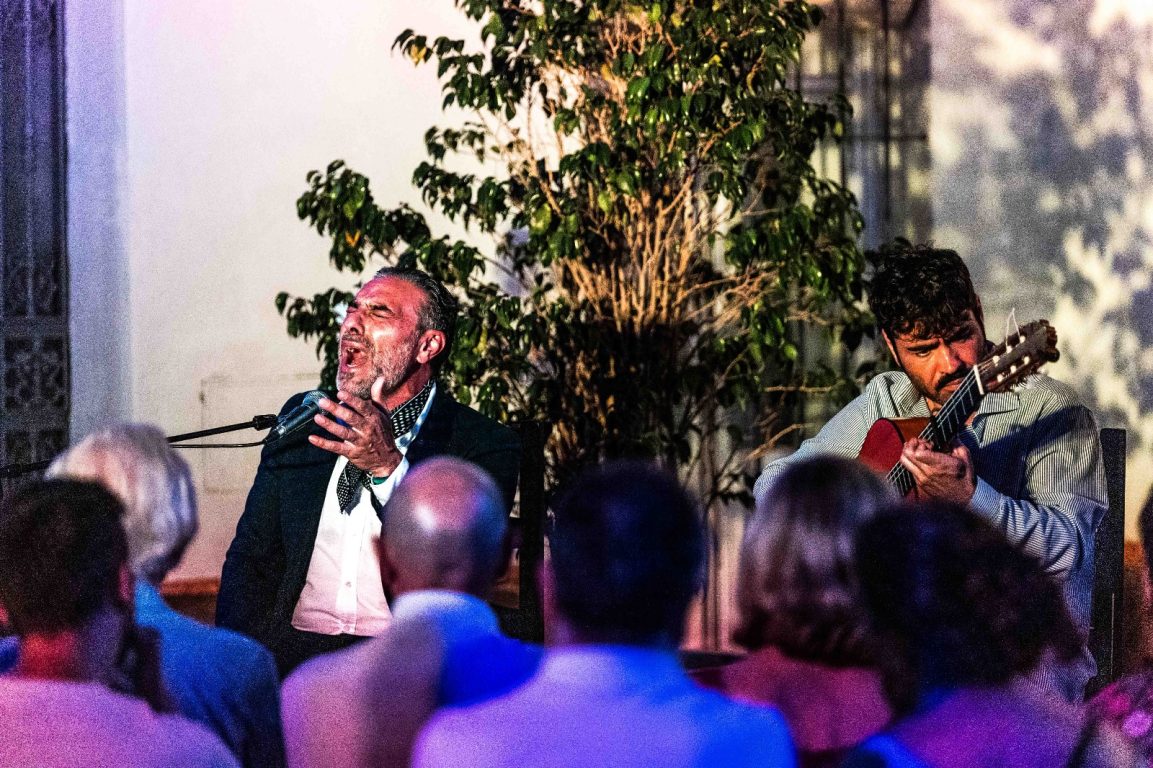Flamenco is a sonic and emotional universe expressed through its various “palos”: musical structures with distinct identities, rich in history, rhythm and feeling. While more than 50 different palos are recognized by artists and scholars, in this first chapter we offer a general introduction to the most representative ones, structured around three key dimensions: history, meter, and emotion.
This series will continue exploring each palo individually, revealing their nuances and showcasing performances from the ALL FLAMENCO catalog.
1. History of Flamenco Palos
Flamenco palos emerged from the cultural melting pot of Andalusia: Gypsy, Arab, Jewish and Andalusian traditions. Over time, these styles became structured into recognizable forms that now make up the core of flamenco. Although there are over 50 palos, they can be grouped by origin and evolution:
- Root palos: Soleá, Seguiriyas, Toná, Romance
- Derived palos: Alegrías, Bulerías, Tientos, Tanguillos, Farruca
- Folk-adapted palos: Fandangos, Sevillanas, Garrotín
- Free-rhythm palos: Saeta, Martinetes, Carceleras
Each palo has a historical context: some originated in a cappella singing (cante a palo seco), others in 19th-century café cantantes, and some evolved in modern-day festivals and tablaos.

2. Meter and Rhythm in Palos
Flamenco meter is governed by the compás, the rhythmic cycle that structures each palo. Based on rhythm, palos can be grouped as:
- Binary meter (4/4): Tangos, Tientos, Fandangos
- Ternary meter (3/4): Sevillanas, Farruca
- Compound meter (12-beat cycle): Soleá, Alegrías, Bulerías, Cantiñas
- Free meter (no fixed compás): Toná, Saeta, Martinetes
Each palo has a unique rhythmic accentuation. For instance, bulería uses offbeat accents that create its playful, fast-paced feel, while soleá flows slowly and solemnly.
3. Emotion and Expression
Palos are also categorized by the emotions they convey. Some arise from pain and tragedy; others celebrate joy and passion:
- Deep or jondo palos: Seguiriyas, Soleá, Martinetes
- Festive palos: Alegrías, Tangos, Bulerías, Cantiñas
- Narrative or melodic palos: Fandangos, Malagueñas, Tarantas
- Religious or solemn palos: Saetas, Carceleras
The emotional nature of a palo determines its vocal delivery, dance style, and guitar composition. For example, alegrías are bright and radiant, while seguiriyas are almost sung as a lament.

Main Flamenco Palos (General List)
- Soleá
- Seguiriyas
- Alegrías
- Bulerías
- Tangos
- Tientos
- Tarantos
- Fandangos
- Malagueñas
- Granaínas
- Cartageneras
- Cantiñas
- Peteneras
- Toná
- Martinetes
- Saetas
- Carceleras
- Romances
- Garrotín
- Farruca
- Sevillanas
- Zambra
- Cantes de ida y vuelta (Guajiras, Milongas, Colombianas)
Next Chapter:
Chapter 2: Alegrías – history, compás and scenic joy
Listen and feel every palo on the ALL FLAMENCO channel: https://allflamenco.net/
